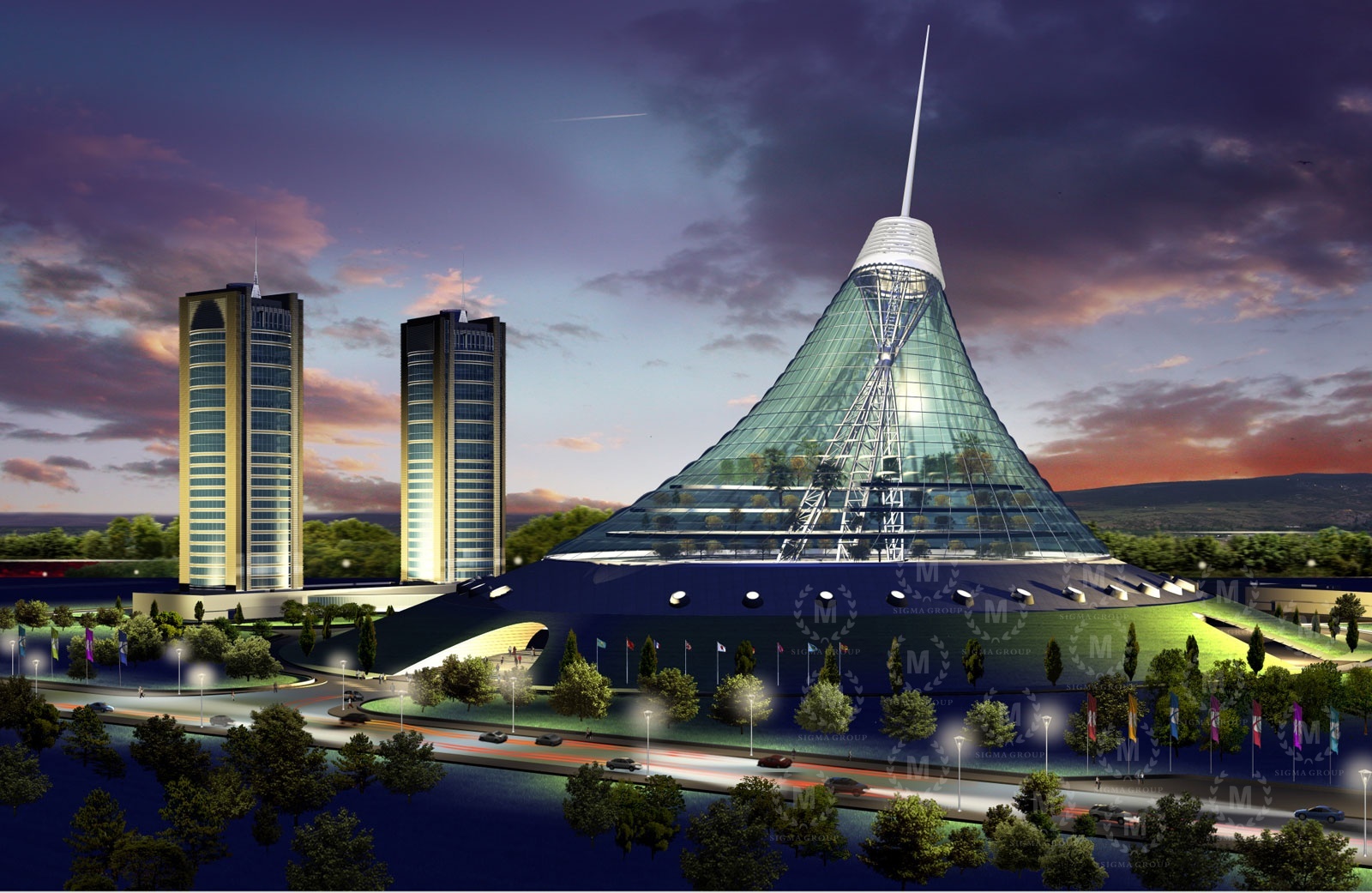Ethylene tetrafluoroethylene (ETFE) is a fluorine-based plastic. It was designed to have high corrosion resistance and strength over a wide temperature range. ETFE is a polymer and its source-based name is poly(ethene-co-tetrafluoroethene). ETFE has a relatively high melting temperature, excellent chemical, electrical and high-energy radiation resistance properties. When burned, ETFE releases hydrofluoric acid.

Properties
ETFE film is self-cleaning (due to its nonstick surface) and recyclable. It is prone to punctures by sharp edges and therefore mostly used for roofs.[2] As a film for roofing it could be stretched (up to 3x) and still be taut if some variation in size occurs (due to thermal expansion, for example.) Employing heat welding, tears can be repaired with a patch or multiple sheets assembled into larger panels.
ETFE has an approximate tensile strength of 42 MPa (6100 psi), with a working temperature range of 89 K to 423 K (−185 °C to +150 °C or −300 °F to +300 °F).[3]
ETFE resins are resistant to ultraviolet light. An accelerated weathering test (comparable to 30 years’ exposure) produced almost no signs of film deterioration.
Applications
An example of its use is as pneumatic panels to cover the outside of the football stadium Allianz Arena or the Beijing National Aquatics Centre (a.k.a. the Water Cube of the 2008 Olympics) – the world's largest structure made of ETFE film (laminate). The panels of the Eden Project are also made from ETFE, and the Tropical Islands have a 20,000 m² window made from this translucent material.
Another key use of ETFE is for the covering of electrical and fiber-optic wiring used in high-stress, low-fume-toxicity and high-reliability situations. Aircraft and spacecraft wiring are primary examples. Some small cross-section wires like the wire used for the wire-wrap technique are coated with ETFE.
As a dual laminate, ETFE can be bonded with FRP as a thermoplastic liner and used in pipes, tanks, and vessels for additional corrosion protection.
Technical support:sigma